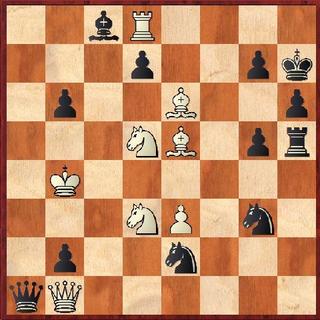White to Play and Mate in Four
Published in Chess Puzzles

Last time out we commented on the wonderful subtlety of the modern problem. You might be interested in a real oldie from 1854. It, too, won a prize back then for its composer, Walter Grimshaw. By today's standards,not only is it the opposite of what we've told you about what to look for, it's what R.N. Coles characterized as "wholly coarse and unrefined." Be that as it may, you still have to solve it!
Solution:
1.Nc1+ Qxb1 2.Bg8+ Kh8 [2...Kg6 3.Ne7#] 3.Nf6 Qg6 [3...gxf6 4.Bxf6#; 3...bxc1Q+ 4.Bb3#; 3...g6 4.Nxh5#] 4.Bf7# Starting the solution with a check is frowned upon today, but you have to admit White’s third move is worth waiting for in a non-checking move. It’s still a very imaginative composition. Even the final move has meaning at f7 because it stops the queen from interfering with the discovered check of the rook. Also, the fact that the variations have all different mating moves makes this quite an impressive composition for its time and any time!
A question from a reader asks why White plays 1.Nc1+ because all of the mating action after that doesn't seem to have needed that. On the contrary, White very much needs to play 1.Nc1+ first so Black is forced to play 1...Qxb1. Once the Black queen is off the a-file then White can play his Nf6 move, WHICH IS NOT A CHECK. If White just went ahead with the solution without Nc1+, then after Nf6, Black could play Qa5+ and there would be no mate in four.
Send questions and comments to PTamburro@aol.com.







Comments